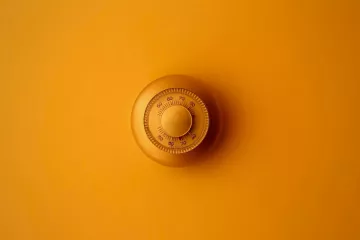Pressure Sensors: Types and future trends
Pressure within the physical sciences is defined as the perpendicular force per unit of an area. The formula is the F/A – force per area and a unit is called Pascals (Pa).
Gathering and collecting continuous data on static and dynamic pressure changes is a vital part of operations for most manufacturing units and industrial institutions, as well as for the proper operation of many consumer products. Overpressure could cause issues such as deterioration, negative shifts of outputs, and generally harm the normal performance of applications.
This is where pressure sensors are introduced to monitor the above-mentioned changes and transform them into an analog electrical signal, where the applied pressure defines its quantity.
Now there is more than one type of pressure, and naturally, there is also more than one type of pressure sensor. We have gone through these to identify the best use case for each type of sensor and its applications and to find out what the demand of the market will look like in the nearest future. Here’s what we found:
The types of pressure, and pressure sensors: Pros and Cons
Types of pressure
There are 4 types of pressures classified in the general academic literature: Absolute, Atmospheric, Differential, and Gauge.
- Absolute(zero) pressure: this is the most definite point; also known as the vacuum. This is essentially a negative gauge pressure (usually referenced to the available standard pressure where the system will be operated).
- Gauge pressure: is essentially the pressure difference between the measured, and ambient pressures. Gauge pressure sensors are rather common and they use a reference to the atmosphere around the sensor. (Because the sensing element has a deflection due to a pressure change, a reference point is needed to know exactly what pressure is being measured).
- Differential pressure: is a bit unlike gauge or absolute pressures, however, it can basically be defined as the difference between two pressures
- Atmospheric pressure: is produced by the atmosphere surrounding the earth (up to altitude ~ 480km) Its value at sea level is 101325 Pa.
Types of pressure sensors
Pressure sensors can be defined as electromechanical devices that are used to identify the perpendicular forces on a unit area
Unlike pressure gauges pressure sensors, on the other hand, do not directly provide a readable output of pressure, but instead generate an output signal value which is proportional to the pressure reading, but which first needs to be conditioned and processed to convert the output signal level to a calibrated pressure reading.
There are a number of ways that we can classify and differentiate pressure sensors such as their operating temperature ranges, outputs type, maximum pressure, accuracy, resolution, operating pressure ranges, etc.
In this piece we decided to go by pressure sensing type and identify the most important features of those in order to create a simple guide while considering the industry trends and the future possibilities
The most commonly used pressure sensing types, namely MEMS system and capacitive, piezoelectric, piezoresistive sensors, and oversee their specifications.
MEMS
Microelectromechanical systems (MEMS) are greatly important modern devices that combine miniature mechanical and electronic components on a silicon chip.
This system is commonly used as a base for pressure sensors themselves like piezosensitive, capacitive, etc. MEMS enables to combine relatively powerful processing of wireless detection with accurate sensors used for it – all on one integrated circuit (IC).
These are often the first choice for some operators while choosing a miniaturization strategy for their pressure sensing.
Applications: Pressure sensors as such have had increased application through non-invasive sensing possibilities they provide, especially in medicine (monitoring and adjusting air pressure in respiratory equipment, blood pressure measurements, etc.) Somewhat recently, MEMS devices enable these systems with miniaturization possibilities which expanded this involvement in the medical applications also through catheter tip sensors, some implantable devices monitoring.
This transition hasn’t been easy in all cases, especially the ones that demand biocompatibility (the mentioned systems are usually with rigged and sharp edges).
The MEMS devices are also compatible in aerospace (long lifespan and reliability a necessity here). The applications include cabin pressure monitoring, engine control, and instruments (altimeters, barometers, etc).
Let’s go ahead explore the advantages and disadvantages of some of the pressure sensors as ell as more defined final applications per each.
Capacitive
Capacitive pressure sensors detect changes in electrical capacitance. These changes appear due to a diaphragm shift (deflected by the applied pressure). These sensors are successfully used to detect touch or proximity. Capacitive pressure sensors are mostly used to identify the position change of a conductive target
Advantages and Disadvantages: The capacitive element is mechanically simple and robust. Capacitive sensors are rather durable against overpressure conditions in a short term; these have the capacity to operate through a wide temperature range. The ranges of pressures that can be measured and monitored with the capacitive pressure sensors are wide (250 Pa – 70 MPa).
A clearly defined disadvantage of capacitive pressure sensors, however, however is the non-linearity factor (the output they produce is inversely proportional to the gap between parallel electrodes). Some ways to fix this issue can additionally cause reduced sensitivity and increased hysteresis. The sensors are also affected by vibration.
The electronics of capacitive pressure sensors need to be placed as close as possible to the sensor within the local environment to minimize the stray capacitance; the performance is are also affected from harsh environmental conditions like temperature or humidity;
Applications: Capacitive pressure sensors are often used in jet engines, car tires, the human body, etc., usually to be measuring gas/liquid pressures. Another use of the capacitive pressure sensors would be to implement them as tactile sensors in wearables or to measure applied pressure in consumer electronics. This is possible due to the mechanical simplicity of the system that is a capacitive pressure sensor (measures gauge, relative, differential pressures).
Piezoelectric
When mechanical stress is applied to piezoelectric materials (quartz, tourmaline, etc.) a certain charge, called piezoelectricity is created. A piezoelectric sensor, naturally, is a sensor that utilizes this effect by measuring the charge created by these materials. The magnitude of this charge is proportional to the applied force, and the direction of the force can be indicated by the polarity of the charge.
With the change of pressure, the charge accumulation, and dissipation happens quite quickly, which makes these sensors useful for measurements of fast-changing dynamic pressures
Applications: Piezoelectric sensors due to their robust nature, high frequency, and rapid response time can be used in various industrial and aerospace-related applications. These are often used in dynamic pressure measurements – in turbulence engine combustion, and other similar locations. The rather wide range of operations, the low power consumption, and sensitivity give them utmost flexibility within these environments as well as in medical applications (i.e.arterial pulse measurements with a thin film plastic sensor).
Advantages and disadvantages: these as mentioned are rather rugged and durable, making it one of the main added values when considering a pressure sensor for the above-mentioned applications, however, these are not limited to those advantages only; the piezoelectric pressure sensors are also very small and sensitive naturally, they also require a very small deformation range to be able to generate an output; at the same time these pressure sensors can measure 0.7 – 70 MPa, with very high accuracy; can withstand temperatures as high as 1,000ºC; are self-powered; are made out of essentially inexpensive materials.
At the same time, unfortunately, the piezoelectric pressure sensors become relevant for a niche of end-users due to some inevitable limitations they come with, such as: their vibration and acceleration sensitivity, noise susceptibility, they have dynamic nature so essentially are unable to provide measurements on solid-state pressure and can only be used to measure dynamic types of pressures
Piezosensitive
The sensing subject is basically the changed resistivity of semiconductor material. When exposed to strain due to the diaphragm deflection. They are used for a wide range of pressure measurements 21 – 150 MPa(additionally, the output stays stable).
Advantages and Disadvantages: These are essentially the widest used pressure sensors and there is a good reason for that – these are simple to build, competitively low cost, have simple circuits that enable high-resolution measurements.
At the same time these as well come with certain, physical limitation, at times making it impossible to enjoy the benefits they could otherwise provide. These cons are, for example, the temperature dependency of the output of Piezosensitive pressure sensors, or the requirement to be powered to provide the measurements; it is framed in the possibility of miniaturization/scaling down, as it will reduce the sensitivity while increasing the power consumption; one of the most commonly used attachment methods – the adhesive attachment method is not always possible with these pressure sensors, especially in high temperatures; low powered, or battery-operated system will probably vastly compromise the performance as such
Applications: even with the limitations we went through just now, the Piezosensitive pressure sensors are of quite high demand. Mostly being applied acceleration, force, torque, pressure, and vibration measurements, these are especially useful in consumer electronics and the medical industry and aerospace/, as well as in household appliances
Gauge
There is a very niche space for the gauge pressure sensors in the industry. These are specifically interesting within the cases when the exact pressure is of less importance than that of the difference between the monitored pressure(or vacuum) and the atmospheric one (as mentioned in the beginning of the blog, the atmospheric pressure varies around the globe due to the altitude or weather changes).
Applications: A gauge pressure sensor provides pressure measurements that are relative to the local atmospheric pressure, thus making them interesting for a unique market, as the other mentioned sensors have their own common measurement principles that don’t always serve the purpose to have the data on relative atmospheric pressure. The gauge pressure sensors as well are commonly and successfully used within the medical sector, in applications such as fluid extraction from wounds, in hyperbaric chambers, and ex-vivo blood pressure measurements. The main reason being, the pressure or vacuum that is developed is often too small, and requires continuous monitoring to keep the patient safe.
Advantages and Disadvantages: To properly discuss this topic, we need to mention that gauge pressure sensors standardly are divided into two categories themselves that have their own advantages/disadvantages over each other.
Digital pressure gauges use pressure transducers, they display the readings on a digital display. The results can be quick, the readability clear. Their consistent performance is mostly powered by a battery, loop, or solar power. Some of the main pros, according to the feedback from the industry are the durability (towards extreme environmental conditions), calibration (the properly calibrated and used digital gauge sensor will stay so for far longer than the one with analog output), Customization possibility based on the use case, Data collection and readability. Some, similarly famous cons however are also likely to come with these sensors such as power source requirement (these sensors cannot be used without one), these also require certification in wide groups of industrial applications, which, analog versions of gauge pressure sensors usually don’t; these are also more expensive compared to the analog ones (due to the microprocessors they use).
With all these in mind, it is important to identify the priorities the customer will have in mind, as the analog sensors, even though they are less expensive – they fail, and they’re not as reliable, these need to be recalibrated and replaced frequently, generaly demanding higher maintenance than the digital ones.
What does the future hold: Pressure sensors future trends
The task towards pressure sensing nowadays comes from a broad spectrum of applications, thus pressure various pressure sensors to serve to beneficiaries all cross that spectrum.
The different types of pressure sensors, their pros, and cons for various applications that we went through by this point in the blog may make it seem like there is certainly market demand that could be somehow satisfied by one of the sensors, and the disadvantages could be ironed out by additional investments (i.e. recalibration, maintenance of the sensing system, additional sensing system, inability of these sensors to provide measurements on twisted surfaces, etc).
These are real compromises that are constantly made by the industries that use pressure sensors. Some of the end uses of these sensors are designed to serve applications so niche, that a simple twist within the environment makes it impossible to serve the user as they expect. One of the largest challenges, therefore, is the unifunctionality and the framed nature of values they provide.
MicroWire
RVmagnetics approaches the industry with the smallest passive sensors in the world. We recommending our R&D services through this fully developed product – the MicroWire sensors . The sensors are passive magnetic elements, that are able to provide real-time measurements on pressure, magnetic field, temperature, el. Current, and other physical quantities. The measurements are gathered on a sensing system, which needs no contact with the MicroWire and is a miniaturized system itself.
Our solution has applications in a wide range of use cases due to the versatility it provides, however, pressure sensing especially, is a sector we aim to revolutionize.
Other than the challenges mentioned above, it is also clear that the global pressure sensor market is almost divided between the larger players – a new market entry needs to come with a highly innovative system, that can combine the benefits and reduce the drawbacks of the currently available systems.
The MicroWire can have a large impact within this ideology due to the following features:
- Miniaturized nature – A single wire of 1–5cm, as thin as human hair is enough to gather the qualitative measurements in question
- Calibration – once created, a MicroWire will not lose the sensitivity, and once the system is custom developed per use case – it will last longer than a lifetime
- Cost-effectiveness – a unit of MicroWire even combined with the electronics,
- Biocompatibility – A MicroWire is an essentially metallic alloy with a glass coating, which makes it resistant to liquid or generally chemically harsh environments
- Passive – needs no contact, or wiring, and can be integrated into/onto almost any material
- Accessibility – can provide a signal to the sensing system through almost any material within 10cm distance, which can then transfer the digitized data to greater distances (through WiFi, Bluetooth, etc.)



